Sizes of sinks for the kitchen: what are they and how to choose?
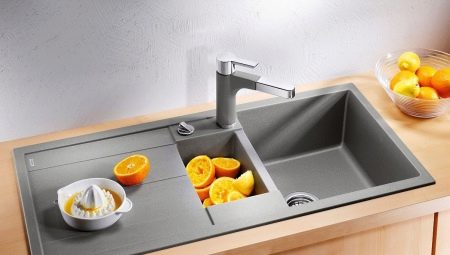
When choosing a sink, you need to pay attention to its dimensions. After all, it is important that everything looks harmonious in the interior. The standard for a square sink is considered to be 500x500 mm, but there may be other parameters of width and length. It all depends on the shape and appearance.
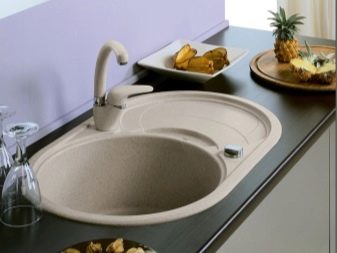
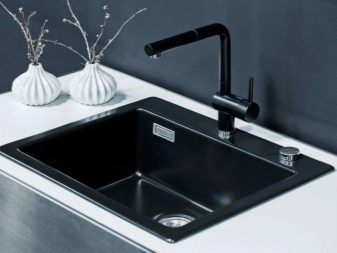
Dimensions depending on the shape
The kitchen is where food is prepared, which means frequent use of the faucet and sink is required. In order for your kitchen to be a comfortable and pleasant place, you need to create a harmonious interior in it. And the sink plays an important role here.
To find a convenient and practical sink, you need to know in advance where it will be installed... One of these options is installation in a cabinet, which will store the necessary cleaning supplies, and a trash can can also be installed.
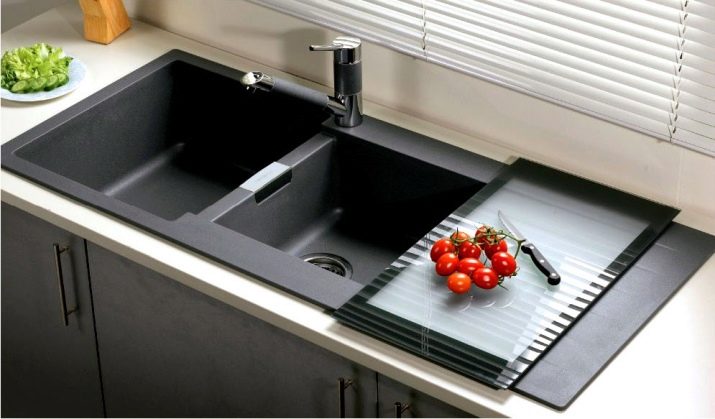
To make the right choice, you need:
- measure the width of the cabinet (cabinet);
- determine the length, it can be different depending on the availability of additional space for drying dishes.
An important rule must be taken into account: there should be gaps from the wall and along the edge of the cabinet.
The minimum distance is 5 cm, but, for example, you can make the distance wider near a wall to accommodate dishwashing detergents and a sponge. It will also avoid the risk of mold. Since at a shorter distance, it is difficult to remove the accumulation of water behind the mixer.
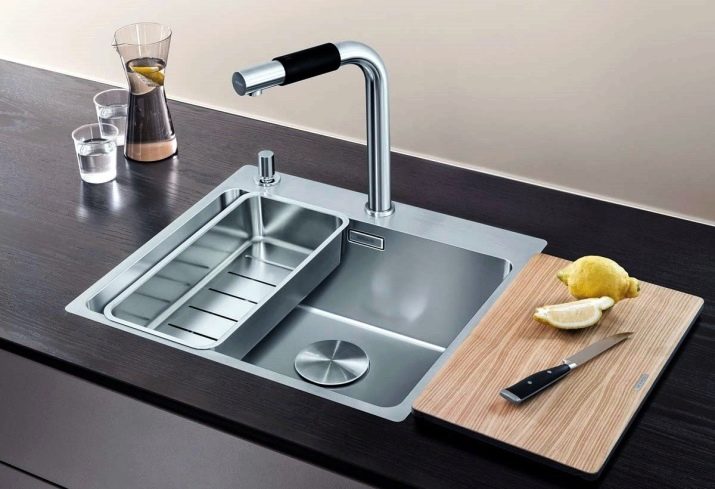
A wide range of forms is presented in modern stores. Also, some manufacturers carry out sinks according to your drawings. These can be interesting and intricate shapes. But still the most popular are standard: square, rectangular, oval, round.
The least popular, but much more economical in terms of space, are trapezoidal sinks. As a rule, they have as a standard one bowl in the middle, and on the edges are equipped with wings for dishes. This is a great option for both right-handers and left-handers.
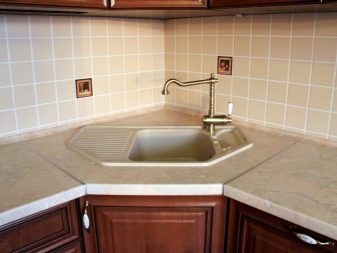
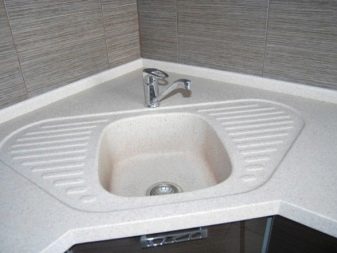
There are also kitchen sinks that have 6 sides. These are overhead options, but they are not yet in great demand.
The main types that are most often used are such options.
- Square shapes, as a rule, they have dimensions of 50x50 cm or 60x60 cm. Suitable for any interior, regardless of style. When choosing such a sink, pay attention to the location of the additional sections. If you are right-handed, it is best if they are on the right. For left-handers - on the left. When you decide on the choice, think about the shade. It should match the main color of the headset.
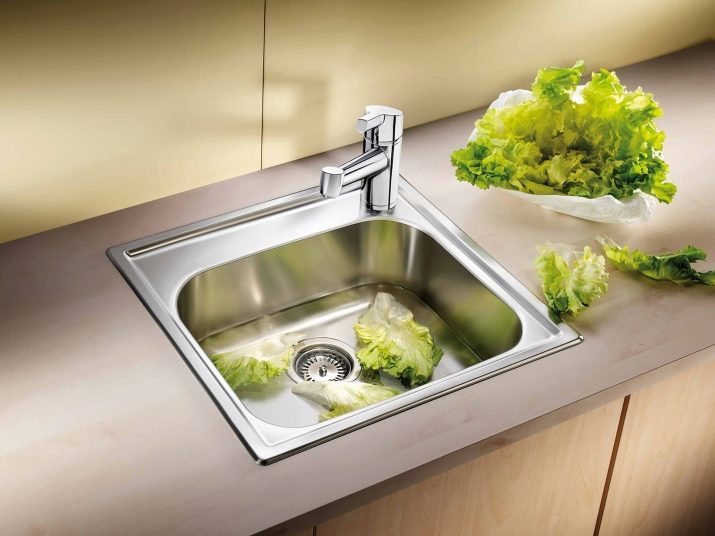
- Rectangular sinks can have small bowls, which makes it less convenient to use. These sinks are suitable for narrow pedestals or countertops. The most optimal sizes are 50x55 cm, 50x80 cm, 50x100 cm. These sizes are considered the golden mean. Most often, such a sink is installed in small kitchens.

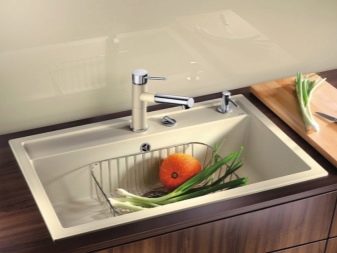
- As the hostesses note, the most convenient to use is the round sink... Its diameter is usually from 45 to 52 cm. But in the case of a large kitchen, other dimensions can be ordered. As a rule, manufacturers produce only a sink, without additional sections for dishes. Round sinks are practical in that even large pots and pans are not sprayed with water.
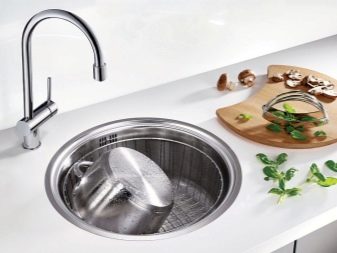

- Oval sinks more practical than rectangular ones due to beveled corners. Sizes are as follows: length 56-77 cm and width 43-51 cm. But this shape is still unusual for users, therefore it is in last place in demand.

Built-in sinks are gaining popularity very quickly. The dimensions are determined depending on how the sink will be installed (cut-in, overhead, integrated).
Overhead sinks in the kitchen require clear dimensions of the countertop, while inset sinks may have an error (no more than 0.5 cm). Overhead sinks are kept on the worktop by their sides. If you make the hole larger, then the sink will simply dangle and additional reinforcement will be needed.
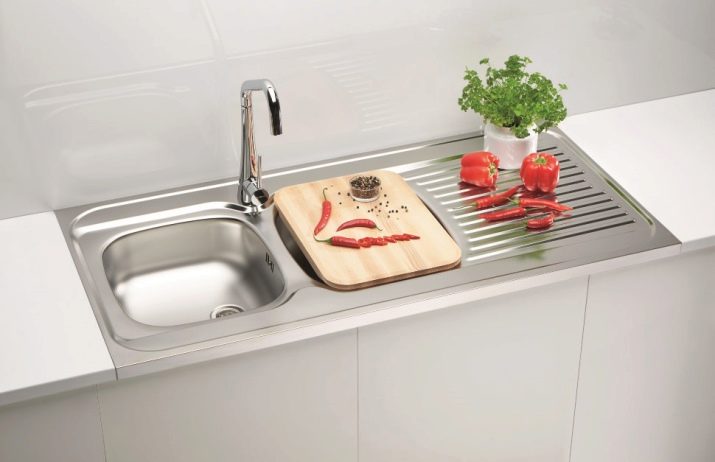
The integrated mounting method is used for stone countertops and built-in sinks and is usually sold with kitchen furniture. The installation of such sinks is carried out by a specialist who is sent by the manufacturer. There are too many nuances when working with such material. It is not always possible to cope on your own.
The number of bowls and their depth
Until recently, it was simply impossible to imagine a sink with two bowls, and even more so with three. But time does not stand still, and for convenience the housewives are offered a choice: two or three bowls. The sink becomes more voluminous, its functionality increases.
If the sink has 2 bowls, then it is suitable for washing dishes and food (washing vegetables and fruits, defrosting meat and fish). Everything is done separately. It is very convenient. You don't have to worry about dish soap or foam accidentally ending up on food.

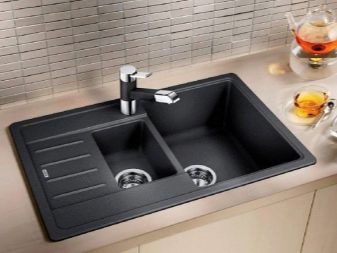
Most often, multi-bowl sinks are used in small businesses related to the food industry. These are cafes or small restaurants.
In order for the sink volume to be convenient, the kitchen countertop must have a width of at least 80 cm. But the length of such sinks from 60 cm is the standard. The bowls come in different sizes. Sometimes it's even more convenient.
For home use, it is best to choose models with two bowls or one and a half - where one bowl is smaller and the other is larger.

The width and length of the sink is certainly important, but the depth is also worth paying attention to. There are a few rules to keep in mind here.
- The most optimal depth is 15-20 cm. This will not only add capacity, but during operation, the water jet will not spray in all directions.
- There are depths above 200 mm. This option is suitable for home confectioners who often bake and need to wash baking sheets. This sink will also be convenient for large families, when you often have to wash large pots. But, as practice shows, such depth is more often applicable for cafes or shops.
- You should not take a sink with a depth of less than 15 cm. The water from the tap will spray; it is better to install such a sink in the bathroom. And if there is a good pressure, then there will be a risk of flooding the neighbors from below.
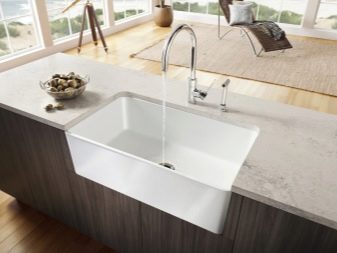

Sizes of sinks made of different materials
The building materials market is growing every year. Innovative, stronger and more durable materials are replacing the familiar. The consumer accepts something, but ignores something. Sink materials are no exception.
Now it's worth dealing with the materials themselves. And there are some nuances here.
- The material must be durable... Indeed, in addition to plates, glasses and cutlery, housewives have to wash heavier things, such as a meat grinder, pots.
- The material should be of low porosity. This will keep its original appearance for a long time. The porous materials absorb grease on which dust settles. It is extremely difficult to wash it all off.
- The sink must be resistant to the formation of corrosion from constant contact with water... Rust not only spoils the appearance, but over time becomes the cause of an allergic reaction to those who touch it.
All these requirements are met by stone, acrylic (artificial stone) and stainless steel (metal) sinks.
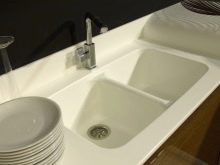
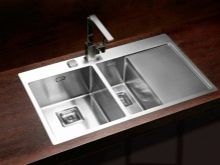
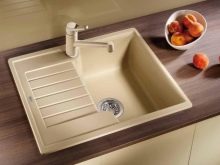
Stainless steel is a metal that does not corrode. You can also say that these sinks are old-timers. They have been used for a very long time. Such a sink will not be affected by a change in water temperature and its service life is very long. Depending on the polish, the sink may have a matte dark shade or be brighter. It is worth noting that if the surface of the sink is polished, then soon you can find many small scratches, which over time will not look very aesthetically pleasing.
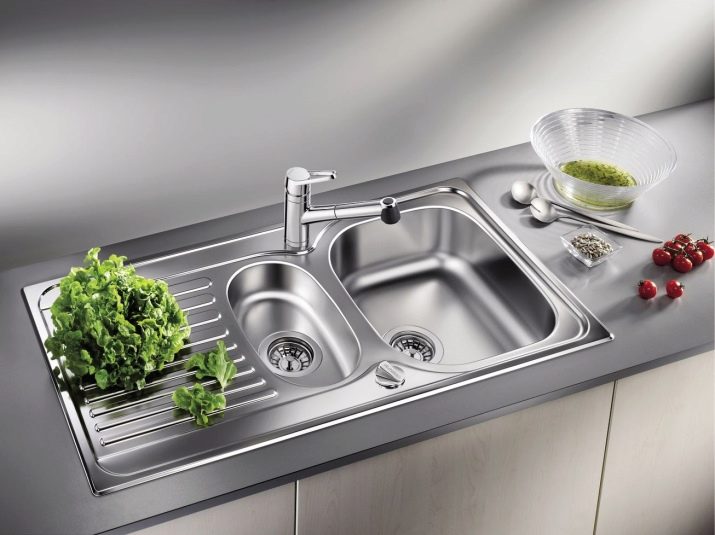
The dimensions of such sinks are standard, it all depends on the shape and the presence of additional sections. It is also worth noting that the material is very light, therefore it is often used for food industry enterprises.
Artificial stone (acrylic) is considered to be the most environmentally friendly material. It is absolutely safe to use. A sink like this will transform your entire interior. The material is strong enough. There are no traces of grease and coloring pigments left on it, since acrylic has a low porosity.
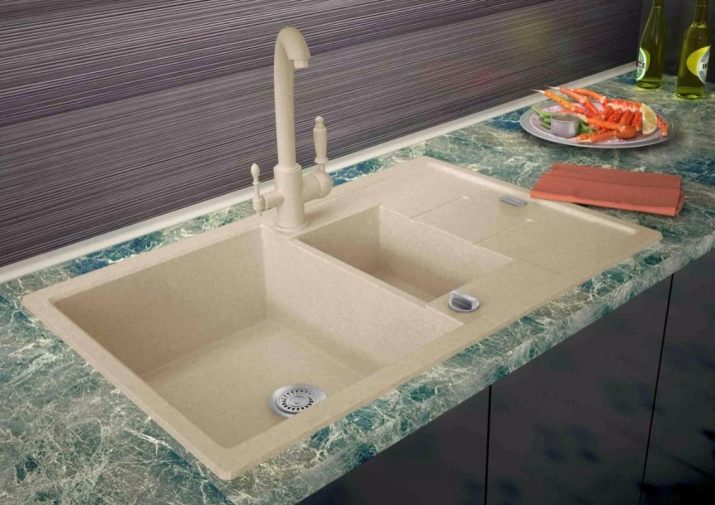
But hot household items or high water temperatures can ruin the flawless look, leaving traces. These are the cons of the material.
The sizes are most often standard, since such a sink is already included with the kitchen furniture. It can only be installed and connected to communications by a specialist.
A huge advantage of acrylic is its variety in shades and their combination. You can choose a dark sink that will contrast with the classic light kitchen. Or make it almost invisible by matching the countertop tone. This is a great design solution for those who love everything unusual. Also, artificial stone looks presentable, but at a price much more affordable than natural.
Stone sinks, unlike the previous material, are not sensitive to high temperatures. This material looks very gorgeous. But it cannot be restored, since marble and granite chips are used for its manufacture.


It is also worth noting that stone sinks are very heavy, so it is customary to make them small. Another disadvantage of such a sink is the high price, not everyone can afford it. Most often, such options are installed in private houses and cottages.
Selection nuances
Every housewife dreams of a unique and original kitchen. Therefore, the choice of sink is important. Choose a sink according to your taste and desires.

In order for the sink you choose to become a part of the interior and its harmonious detail, it is worth remembering the nuances of choice.
- It is worth making the choice by parameters... They depend on the area of the kitchen itself, as well as the width of the countertop. For example, for a small kitchen of 6 sq. m it is worth choosing a small sink. If it is equipped with dish wings, then its width should not be more than 120 cm.
- Place of installation... Here it is worth deciding on the headset, and then measure the optimal distance from the refrigerator and from the stove (remember the rule of the "working triangle").
- Number of bowls. The most popular are double and one-and-a-half (one bowl large, the other small) kitchen sinks. When choosing, you need to take into account the height of the mixer, it should be convenient to use for both bowls.
- Installation method. It is better to choose between a flush-mounted and a surface-mounted sink. To install the first, you will have to measure not only the width and length, but also the depth so that it is optimal and located at a sufficient distance from the floor. The overhead sink is held in place by its rims.
- And finally, in order to properly position the sink, you need to remember that it must be between the refrigerator and the stove.... This is the best option when preparing any dishes and simple manipulations that most often have to be done in the kitchen. The correct positioning of the sink will save time.
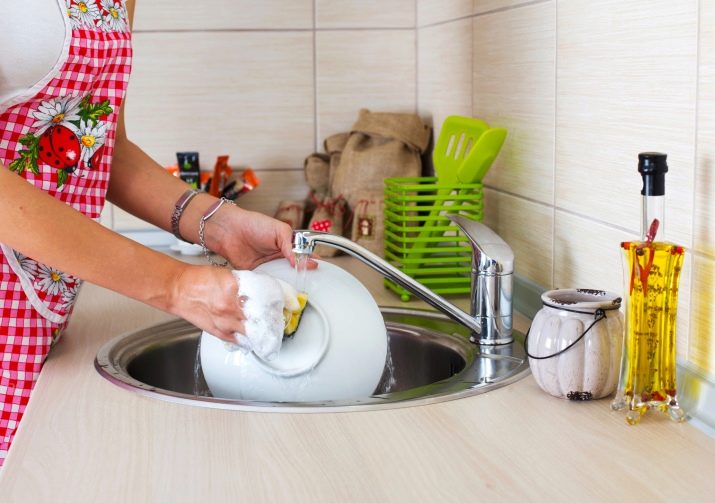
All these tips will definitely help housewives make the right decision and make their kitchen convenient for work.
How to choose a sink for the kitchen, see below.








